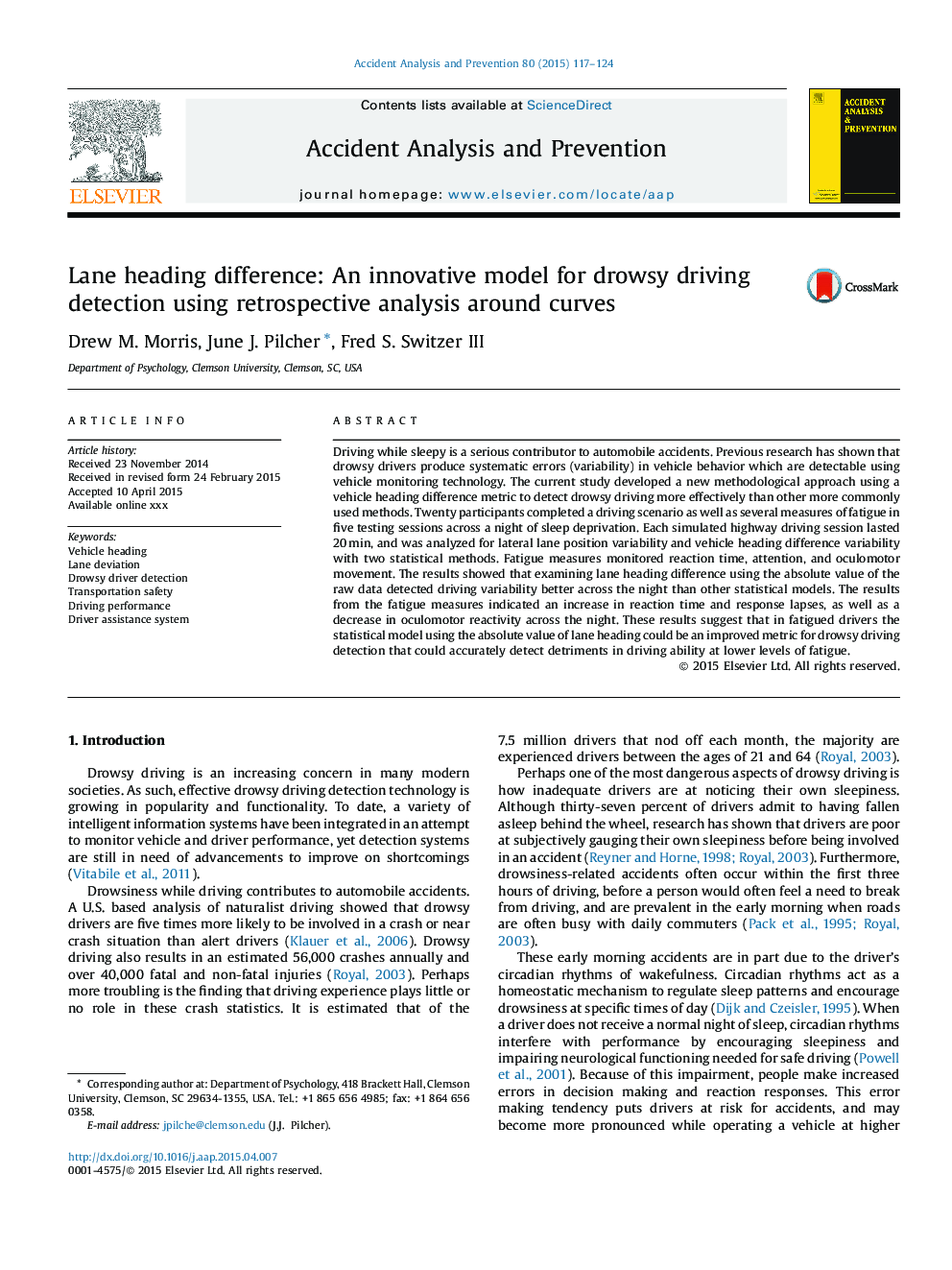| Article ID | Journal | Published Year | Pages | File Type |
|---|---|---|---|---|
| 6965645 | Accident Analysis & Prevention | 2015 | 8 Pages |
Abstract
Driving while sleepy is a serious contributor to automobile accidents. Previous research has shown that drowsy drivers produce systematic errors (variability) in vehicle behavior which are detectable using vehicle monitoring technology. The current study developed a new methodological approach using a vehicle heading difference metric to detect drowsy driving more effectively than other more commonly used methods. Twenty participants completed a driving scenario as well as several measures of fatigue in five testing sessions across a night of sleep deprivation. Each simulated highway driving session lasted 20Â min, and was analyzed for lateral lane position variability and vehicle heading difference variability with two statistical methods. Fatigue measures monitored reaction time, attention, and oculomotor movement. The results showed that examining lane heading difference using the absolute value of the raw data detected driving variability better across the night than other statistical models. The results from the fatigue measures indicated an increase in reaction time and response lapses, as well as a decrease in oculomotor reactivity across the night. These results suggest that in fatigued drivers the statistical model using the absolute value of lane heading could be an improved metric for drowsy driving detection that could accurately detect detriments in driving ability at lower levels of fatigue.
Related Topics
Physical Sciences and Engineering
Chemical Engineering
Chemical Health and Safety
Authors
Drew M. Morris, June J. Pilcher, Fred S. Switzer III,
